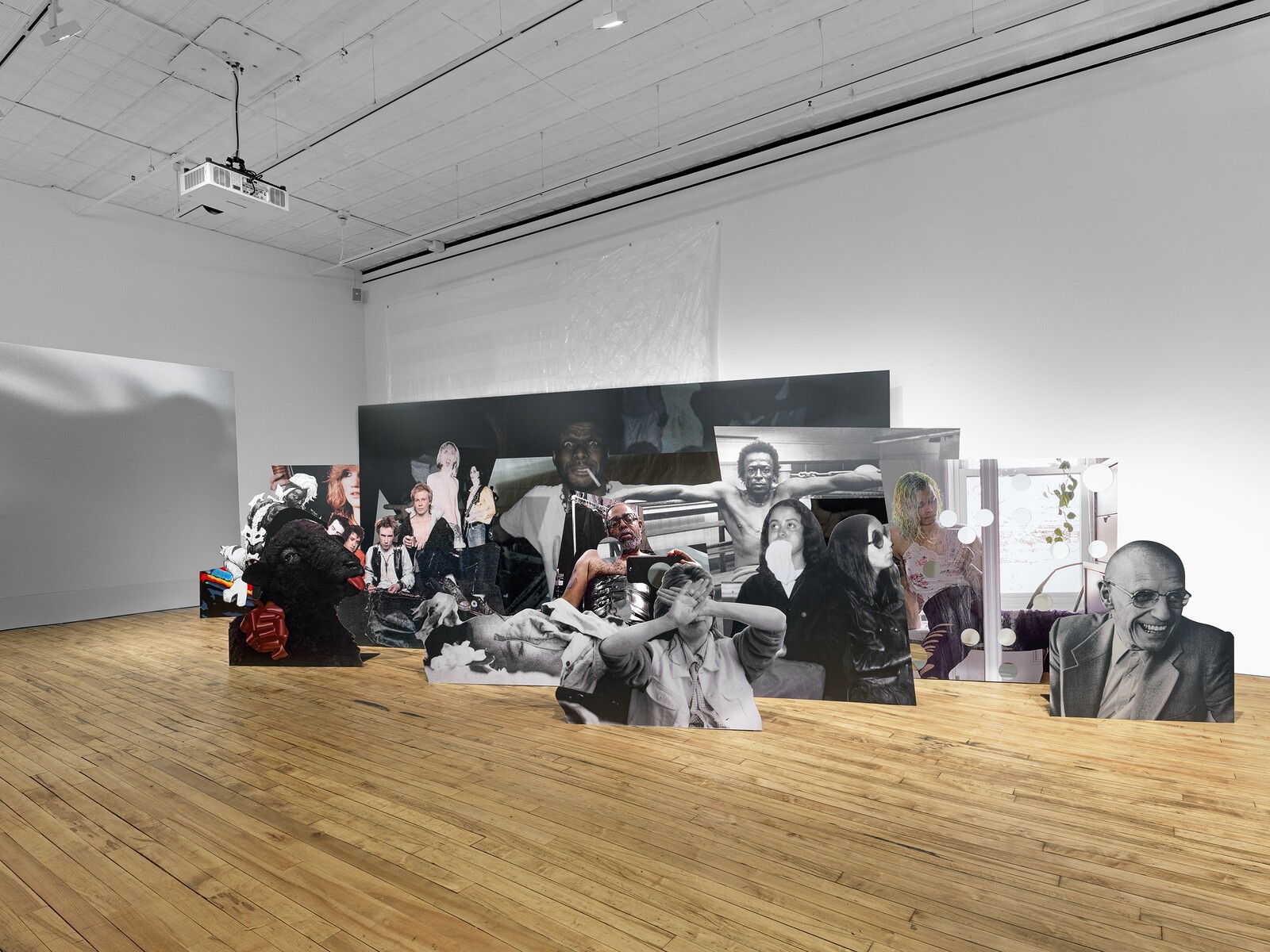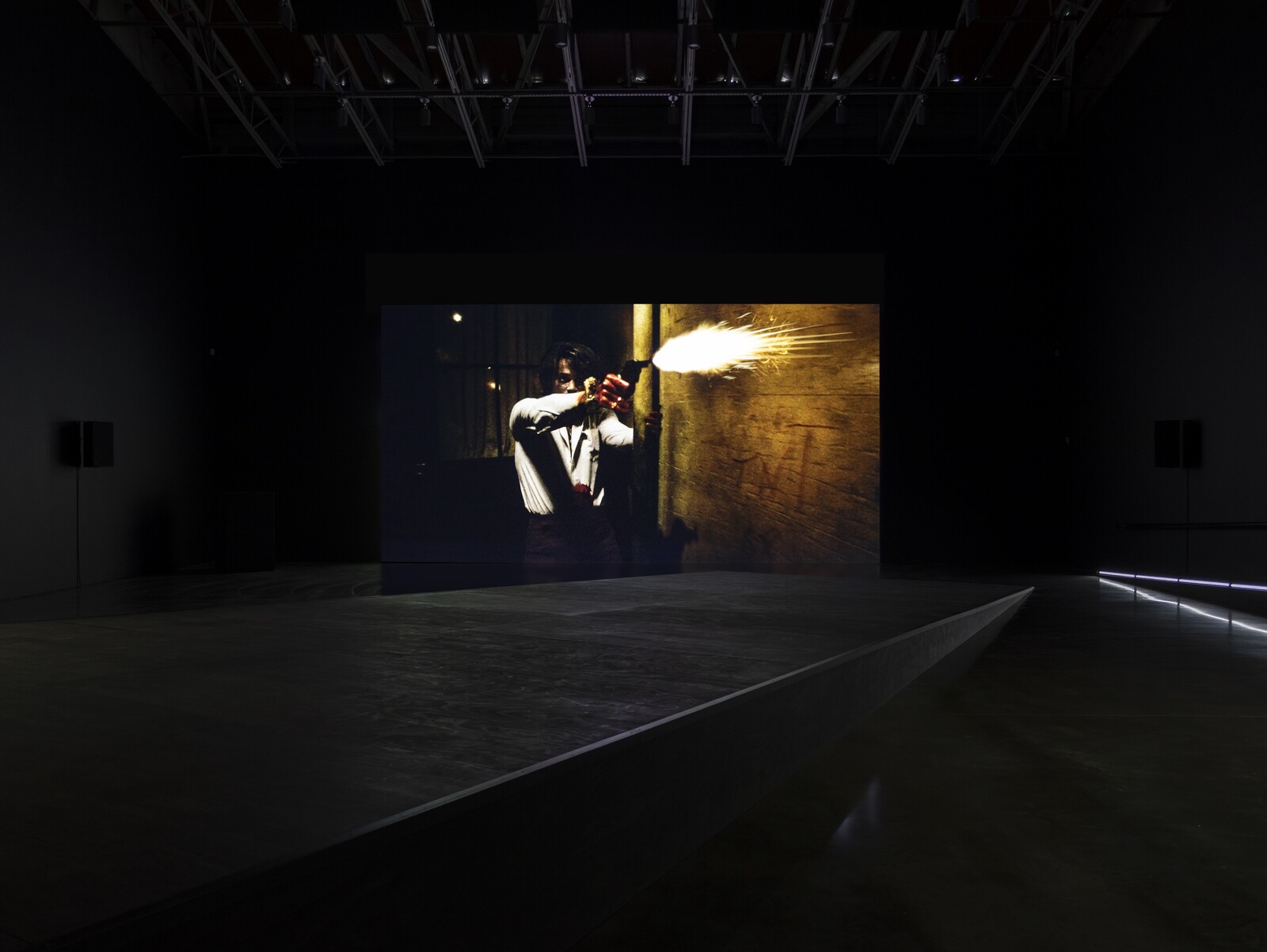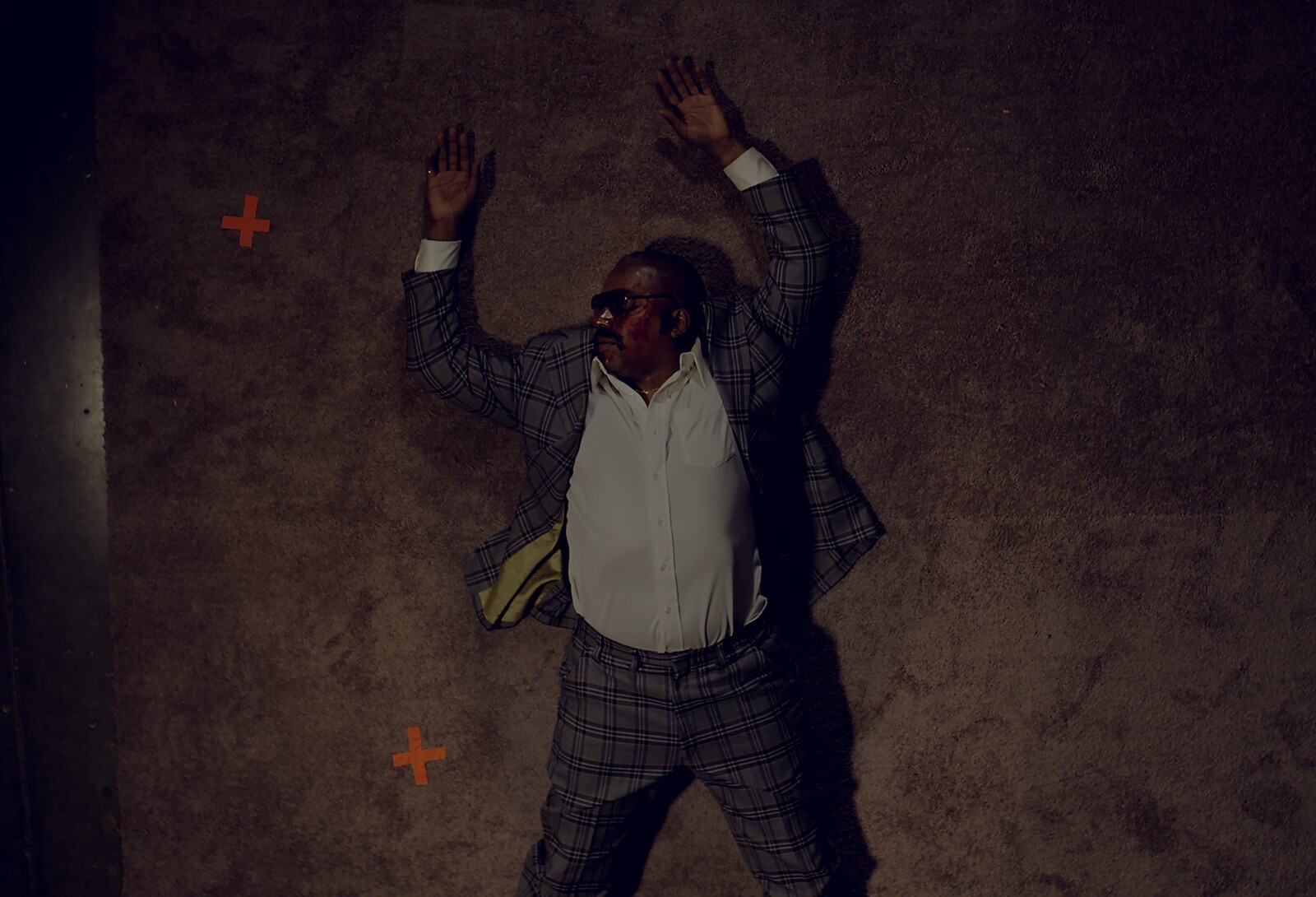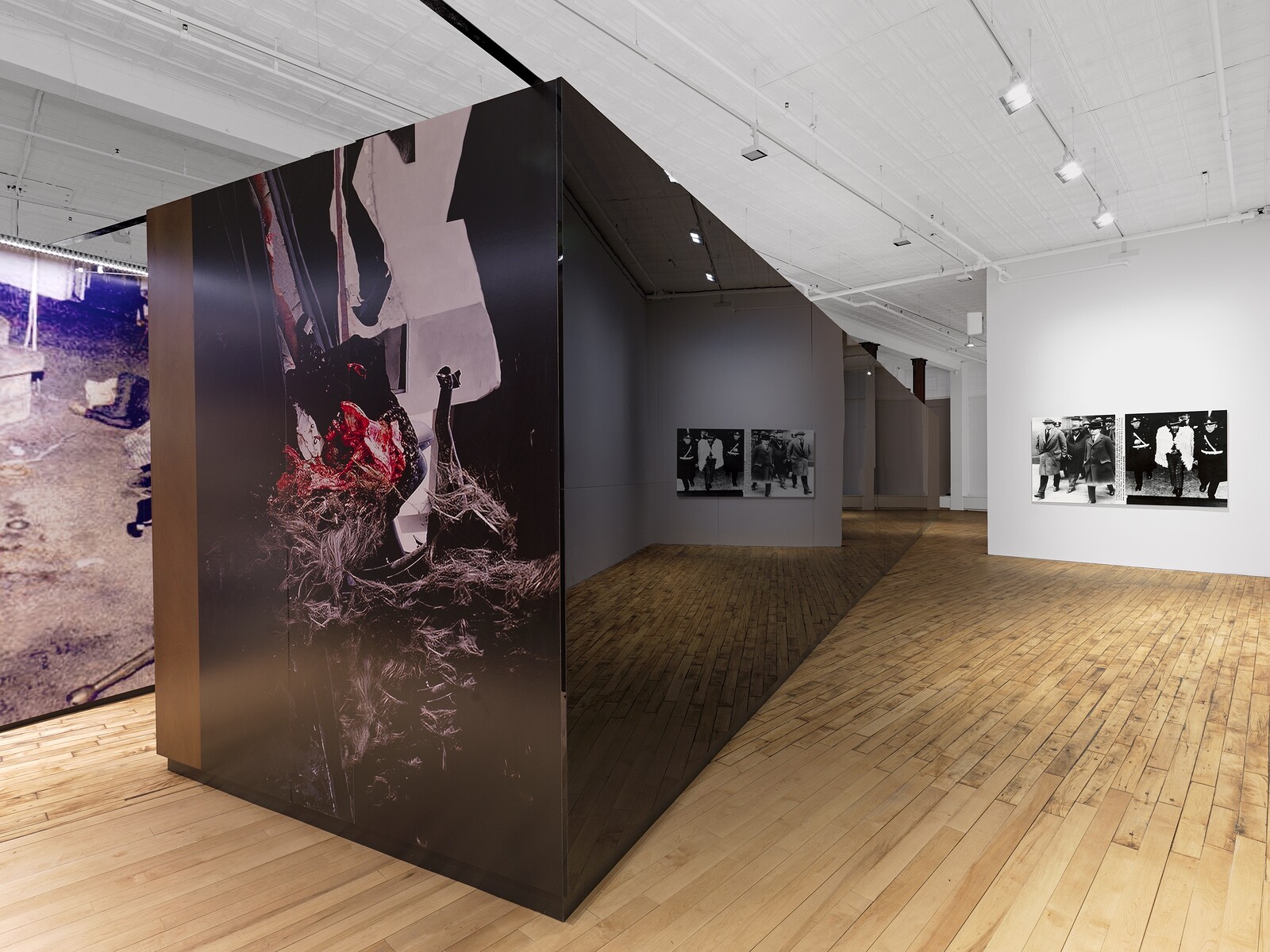With the subtlety of a revolver, Arthur Jafa’s merciless ***** distilled the racial psychopathy of Martin Scorsese’s Taxi Driver (1976) by replacing the white characters in its climactic bloodbath with Black ones. Robert De Niro and Jodie Foster still play Vietnam vet Travis Bickle and the pubescent sex worker he thinks he’s saving but—by recording new performances and stitching them into the original footage—Jafa transformed the white pimp Sport into the Black Scar, the bouncer and the john were made Black, and so too the horrified cops who edge in after Bickle has emptied his guns. This wasn’t so much a subversion as a restoration: the script had called for a Black body count, but was recast to avoid inflaming audiences. Critics of Jafa’s redux—recently screened at Gladstone Gallery—have complained that Taxi Driver was already about race.1 But Jafa’s grim snuff film takes that fact to be obvious, then warps it, repeating his revised climax with small differences and new surprises, for seventy-three minutes.
Jafa’s show of sculptures at 52 Walker carries the same themes of Blackness, erasure, violence, and moving images, but in a more damning, paranoid register. A walkthrough structure, studded with extruded aluminum sculptures like bisected window sashes, is wallpapered with blown-up pixelated photos from Jafa’s expansive mood board, pulling the viewer through a hall of horrors. A line of battered white plastic traffic bollards juts out from another wall. But the main event is Large Array II (2024), a personal cultural pantheon ranging from the Sex Pistols to Michel Foucault, rendered as shaped aluminum standees and arranged as if for a class photo. The work cites Cady Noland’s series of aluminum standees from the late eighties and nineties depicting overlapping, clipped-out American icons: the Manson Family, Lee Harvey Oswald. In the front row of Jafa’s group is Noland herself, blocking her face with both hands.
Within Large Array II are clusters of associative meaning. Middle-right is Jim Marshall’s 1971 portrait of Miles Davis, bare-chested and arms outstretched in the corner of a boxing ring: the posture is Christlike and confident. Nearby is a closeup of Billie Holiday lying in state. Both musicians are silent. There are other artists, too—Noland; Adrian Piper, from documentation of Catalysis IV (1971), in which she traversed New York with a white cloth stuffed into her mouth; the video artist Tourmaline. In the mix is Jafa himself, wearing a glossy corset and taking a mirror selfie.
Jafa puts holes in his own picture and Tourmaline’s (but none of the others, it’s not clear why), nodding to a 1989 Noland work titled Oozewald: an aluminum cutout of Lee Harvey Oswald photographed the instant he was shot by Jack Ruby.2 Noland’s standee is punctured by eight perfectly machined holes, four in the body, four over eyes and mouth. One of the mouth holes is stuffed with an American flag. In Jafa’s portrait, holes puncture his phone as well as neck and shoulder. The hole is a formal device—there when it’s empty, gone when it’s full—gunshot wound, gun barrel, absence, grave. Noland covers her face, as if to stop a bullet, and stops the camera; hiding, but wholly there.
An Afropessimist sense of erasure links these two shows, both of which hinge on the idea that mediatized murder is a good way to get attention. The line between celebrity and monster is gossamer, mixed up in a culture of antiheroes and gunslingers, fuzzed out by the noir tradition of cinematic murder—in which both Taxi Driver and ***** (and Jafa’s 2016 breakthrough, Love is the Message the Message is Death) indulge. Jafa has said that Bickle “is Dylann Roof.”3 Lee Harvey Oswald is remembered for killing John F. Kennedy, and the chain of notoriety carries to Jack Ruby, who killed Oswald—the assassin’s assassin—and is treated in some circles as a hero.
Only since Hollywood can people plausibly claim the insanity of confusing mass culture with real life. John Hinckley Jr., Jodie Foster’s actual stalker, fell in love with her twelve-year-old character in Taxi Driver. To win her respect, if not her love, he shot Ronald Reagan (his second choice—he’d flubbed an attempt on Jimmy Carter) and said he got the idea from the movies. (Killing Foster’s pimp is Bickle’s fallback plan, too; first he tries to shoot a senator.) Jafa, perhaps sanely, wounds his own image. The hole prompts a sort of forensics—here you have a corpse, a Kennedy or an Oswald or a Scar—and it’s the viewer’s paranoid role to trace the shots back to the gun: to reanimate the still.
See Alex Greenberger, “Arthur Jafa Produces a Nauseating Disappointment with a Revisionist Take on ‘Taxi Driver’,” ARTnews (April 2024), https://www.artnews.com/art-news/reviews/arthur-jafa-gladstone-gallery-taxi-driver-redacted-52-walker-review-1234702666/; and Jerry Saltz, “Taxi Driver Was Always About Race,” Vulture (April 2024), https://www.vulture.com/article/arthur-jafa-taxi-driver-jerry-saltz-review.html. ***** was exhibited at Gladstone Gallery from April 4 to May 4.
Rasmus Røhling and Travis Diehl, “Cady Came Home,” X-TRA (August 2019), https://www.x-traonline.org/online/cady-came-home.
Aruna D’Souza, “A ‘Taxi Driver’ Remake: Why Arthur Jafa Recast the Scorsese Ending,” New York Times (April 2024), https://www.nytimes.com/2024/04/05/arts/design/jafa-taxi-driver-scorsese-film-art.html.




